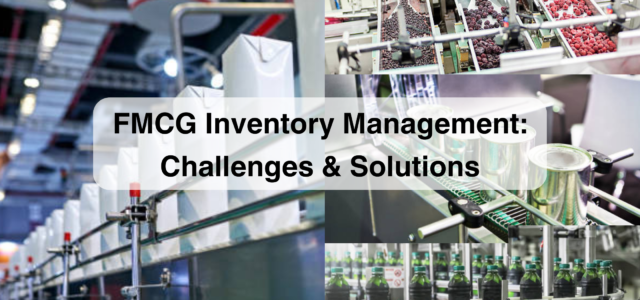MRO procurement’s challenge is real and rapidly increasing. However, since the method can be so complicated and unmanageable, many companies are simply lending themselves — how much value is in doubt, because goods are cost-effective? Goospares, let you make MRO savings which help you achieve sustainable, longer-term efficiency savings.
With Goospares support, the value of the MRO contract is evident, which is a drastic reduction in inventory levels, SKUs, and contract value leakage, which contributes to a growing financial boost.
Let’s see how Goospares can make MRO procurement strategies simpler
1. Sourcing and category management
Sourcing focuses on direct goods or services, while procurement focuses on indirect goods or services, which is the biggest difference.
Of course, this is not a tough and fast policy.
Sourcing focuses more on supplier interactions and eliminates the chances of new suppliers’ acceptance. Procurement executives manage the procurement and acquisition of the required products to produce items for sale.
Our sourcing and category management services provide continuity and transparency to shoppers. The products are categorized according to consumer preferences based on similarities. On the basis of availability and preference, the user finds it easy to substitute products.
2. Contract Management
The process of contract management can be complicated, but the benefits of profitable contract management are potentially immense.
The monitoring and analysis of procurement efficiency by managing ties with suppliers helps to attain the highest organizational success.
Goospares states that good strategies to improve contract management could bring the performance of supplier relationships even more apparent. With a robust archive of contract data, the procurement team can find the right supplier and build productive negotiations easily.
The goal of our contract management is to:
- The ability to motivate suppliers to improve their performance is focused on better knowledge of supplier operation.
- Based on better information, device warnings, and flags, risks, and liabilities are reduced.
- Increased reduction in costs by making contracts and vendor management more effective.
3. Global Sourcing
As the demand for high-quality goods is rising globally, competition is also increasing. Companies must remain aware of rapidly changing technologies, increase quality at the same time, and costs and improve customer support at all levels of the supply chain in order to produce profits.
Many benefits of global sourcing are learning how to effectively do business in a foreign environment, identifying and creating alternative suppliers to minimize costs and improve competition.
Businesses that used global sourcing have kept their competitors behind them, lowered the cost of products, increased market speed, and continuously improved efficiency.
Our global sourcing strategy with a network of trustworthy suppliers around the globe will give you what you need for global competitiveness to develop and expand your business.
4. Catalogue Management
Catalogue management is a dynamic process allowing suppliers to broadcast and launch new products rapidly.
It guarantees product data consistency through the willingness of a user to update product data in a catalogue in order for consumers to make better buying decisions.
With the aid of our online Catalogue Management,
- Buyers are entitled to more efficient enquiries through E-Catalogues by providing online access from anywhere on the Internet. Buyers, once linked, can consult providers’ latest data and seek detailed product details, for example, product descriptions, prices and images.
- Suppliers are able to share with however many retailers they want their new product details. An online catalogue helps them to add or delete items, fix errors and upgrade features without repression.
- It allows the business to be directly linked to their customers. This, in turn, allows for quicker decision-making and better market response.
5. E-Procurement
The role of E-procurement is to buy the correct product or stock in a cost-efficient manner in good time. E-procurement systems can be introduced quickly and economically and deliver substantial immediate investment returns compared to ERPs.
Our MRO E-Procurement provides businesses with a comprehensive overview of the markets to make informed decisions about streamlining their supplier base. An E-contract is a twin lane. Both buyers and suppliers are needed.
Benefits of buyer
- Higher transaction tractability and optimization.
- Boosted the procurement phase.
- Inventory levels decreased.
Benefits of supplier
- The annual rise in revenue.
- Shipment Errors automatic detection.
- Reduced reports of fraud.
6. Supplier Engagement
A wide range of activities with suppliers that are held on a regular basis can discuss successful supplier engagement.
In order to guarantee the highest degree of confidence and transparency in all interactions with suppliers, a supplier participation plan (SEP) records processes, structures and communication approaches are led by us.
It includes keeping the market aware of supply opportunities, maintaining supply relationships and coping with grievances and debriefings during procurement.
7. Supplier Relationship Management
Supplier relationship management is no longer a new idea. Supplier relationship management is used by supply chain experts who in fields such as sourcing, project management and operations, routinely deal with suppliers.
Goospares, aimed at providing good links between buyers, suppliers and deciding on the activities which each supplier can undertake. Buyer Relationship Management focuses on establishing mutually beneficial ties with suppliers in order to promote the brand’s quality, performance, innovation and other advantages, particularly those considered the most strategic.
Our SRM involves three essential steps:-
Segmentation of suppliers – Identify and categorize each supplier according to its company value.
Development of supplier strategy – Prepare for any supplier/category tactical plans and performance indicators.
Implementation of supplier strategy – Assigning people to roles and constantly enhancing the performance of the plan.
Conclusion
The overall purpose is to minimize the operation and validation of supplier catalogues and pricing data so that the correct component can be obtained at the purchase price.
We deliver a variety of solutions that assist the procurement teams with sourcing, service providers and organizational procurement. It helps our clients find cost-saving opportunities and boost results.








